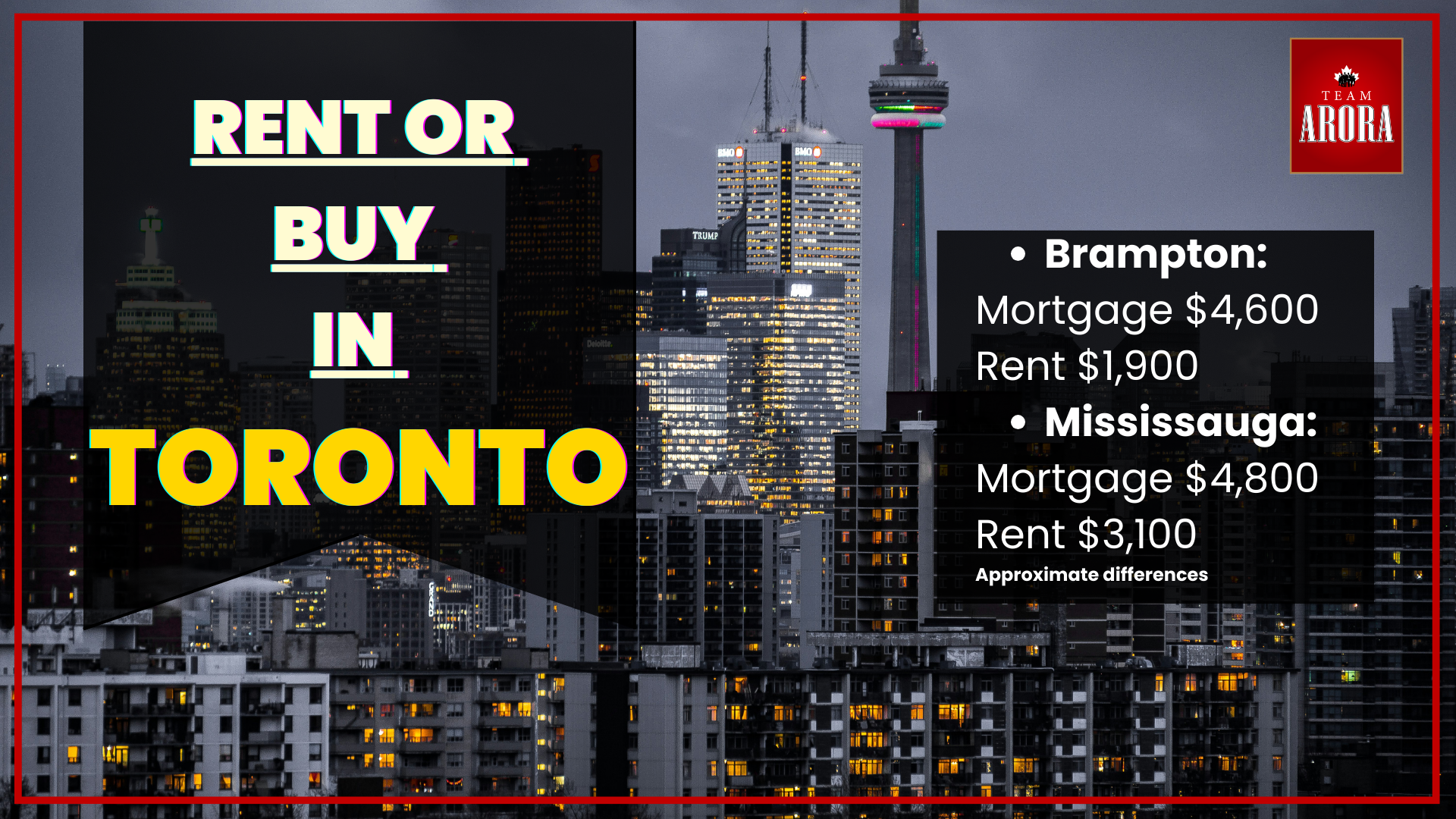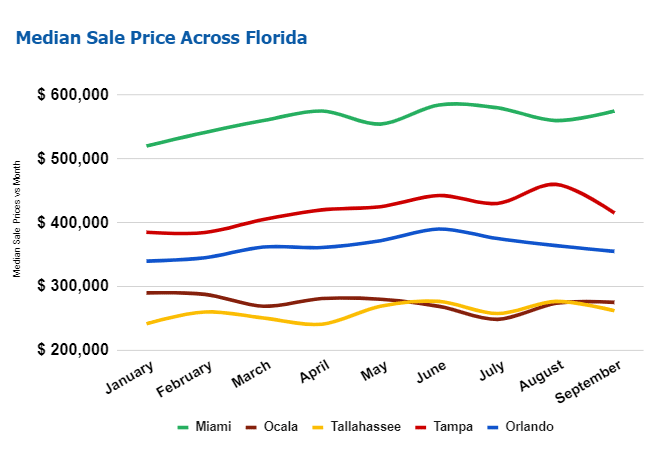When considering whether to rent or buy in Toronto, it’s clear that renting is currently much more affordable. However, buying remains the best long-term investment option. This analysis aims to break down the costs associated with both renting and buying in Toronto, helping you make an informed decision based on your financial situation and lifestyle.
Current Rental Market Overview
According to a recent report, rental prices in Canada have seen significant increases. The average asking rent in the country climbed nearly 2% month-over-month and skyrocketed close to 10% year-over-year to a record high of $2,117 as of September 2023. This upward trend is particularly pronounced in Toronto, where the typical one-bedroom apartment rents for about $2,620, and a two-bedroom apartment rents for approximately $3,413. Even renting a room with roommates in Toronto costs around $1,300. These high rental costs highlight the ongoing supply-demand imbalance and rising mortgage rates that have kept rental prices elevated.
The Pros and Cons of Renting vs. Buying in Toronto
The Price Comparison
Let’s look at the average home prices in the Toronto real estate market:
- Detached House: Approx. $1.4 million
- Semi-Detached House: Approx. $1.1 million
- Townhouse: Approx. $935,800
- Condo Apartment: Approx. $705,572
According to the Canada Mortgage and Housing Corporation (CMHC), the average mortgage payment in early 2023 was nearly $2,200. While this varies by property type and location, it gives a rough idea of monthly housing expenses.
In contrast, renting a one-bedroom unit in Toronto costs around $2,620, making it a more affordable monthly expense compared to owning. However, the challenge for many potential buyers lies in the down payment required for a mortgage. Depending on where you live in Toronto and the type of property, owning a home could be cheaper over time than renting.
Cost of Ownership vs. Renting
One of the key advantages of renting over owning is the potential savings on monthly expenses. Renters avoid the costs of property maintenance, repairs, and replacements. Homeowners, on the other hand, need to budget for condo fees, utilities, property taxes, and insurance, in addition to mortgage payments. For example, homeowners must cover costs like replacing appliances and maintaining the property, which can add up significantly over time.
Flexibility vs. Responsibility
Renters enjoy greater flexibility compared to homeowners. Renting allows for easier relocation without the long-term commitment of owning property. This flexibility can be particularly advantageous in a volatile housing market or for individuals who anticipate moving frequently. On the contrary, homeowners have greater responsibilities, including regular maintenance and dealing with unexpected expenses. While owning a home builds equity and offers potential financial gains over time, it also comes with the burden of these ongoing responsibilities.
Analyzing the Long-Term Investment
From a long-term perspective, buying a home in Toronto can be a more advantageous financial decision. Home prices in the city have generally trended upwards, leading to equity growth for homeowners. The idea of owning a home and building equity to fund future financial goals, such as retirement or education, is an appealing prospect. Despite higher upfront costs and monthly expenses, homeownership remains a core component of financial stability and wealth building.
In contrast, renting offers immediate cost savings and flexibility, but without the long-term financial benefits associated with property ownership. Renters do not build equity, and their monthly payments do not contribute to any financial asset. However, renting can be a practical short-term solution, particularly for those who may not have the savings required for a down payment or who prioritize mobility and lower immediate costs.
Regional Cost Comparisons in the GTA
To further illustrate the cost differences, let’s examine average mortgage and rental prices in various Greater Toronto Area (GTA) regions:
- Ajax: Mortgage $5,300, Rent $2,700
- Aurora: Mortgage $6,300, Rent $2,800
- Brampton: Mortgage $4,600, Rent $1,900
- Caledon: Mortgage $5,900, Rent $2,900
- King City: Mortgage $8,800, Rent $3,200
- Markham: Mortgage $5,900, Rent $2,700
- Mississauga: Mortgage $4,800, Rent $3,100
- Newmarket: Mortgage $5,300, Rent $2,600
- Oakville: Mortgage $6,900, Rent $2,700
- Richmond Hill: Mortgage $6,400, Rent $2,600
- Simcoe County: Mortgage $5,100, Rent $2,200
- Vaughan: Mortgage $5,800, Rent $3,100
These figures show that renting tends to be more affordable on a monthly basis across various GTA regions. For instance, renting in Mississauga costs around $3,100 per month, significantly lower than the average mortgage payment of $4,800. This pattern is consistent in other areas like Brampton, where renting costs $1,900 compared to a mortgage payment of $4,600.
Deciding whether to rent or buy in Toronto hinges on your circumstances and financial goals. Renting is much more affordable in Toronto, offering lower monthly costs and greater flexibility. However, for those who can afford the higher initial and ongoing costs, buying a home represents the best long-term investment, providing the benefits of equity growth and financial stability. Ultimately, choosing between renting and buying depends on your current financial situation, lifestyle preferences, and long-term objectives. Whether you choose to rent or buy in Toronto, it’s crucial to consider all factors to make the most informed decision.
FAQs: Rent or Buy in Toronto
1. Is it cheaper to rent or buy a home in Toronto?
Renting is generally more affordable in the short term in Toronto, with average monthly rental costs for a one-bedroom apartment around $2,620. In contrast, buying a home involves higher upfront costs (e.g., a down payment) and higher monthly expenses, including mortgage payments, property taxes, and maintenance fees. However, buying offers long-term financial benefits through equity growth and potential property value appreciation.
2. What are the main advantages of renting in Toronto?
Renting in Toronto offers several advantages, including lower monthly costs, flexibility to move without a long-term commitment, and freedom from maintenance responsibilities. Renters do not need to worry about property taxes, home repairs, or the fluctuations in the real estate market, making it a practical choice for those who prioritize mobility and lower immediate expenses.
3. What are the benefits of buying a home in Toronto?
Buying a home in Toronto can be a valuable long-term investment. Homeownership allows individuals to build equity over time, benefit from property value appreciation, and have a sense of stability. Although it comes with higher upfront and monthly costs, owning a home can provide financial security and potentially significant returns on investment over the years.
4. How do I decide whether to rent or buy in Toronto?
Whether to rent or buy in Toronto depends on your financial situation, lifestyle preferences, and long-term goals. Consider factors such as your budget for upfront costs, monthly housing expenses, how long you plan to stay in one place, and your long-term financial objectives. Consulting with a financial advisor or real estate expert can also help you make an informed decision based on your circumstances.









